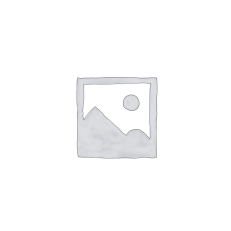Description
ABSTRACT
Disinfectants are antimicrobial agents that are applied to non-living objects to destroy micro-organisms that are living on the object which is also known as germicide, example of this substance is known and popularly called Izal. They are different from other antimicrobial agents like antibiotics which destroys micro-organisms within the body and antiseptics, which destroys micro-organisms on living tissues. The production of work involves the following active ingredience; texapol, phenol, Lysol, pine oil, izal concentrate, white binder, Carbolic acid and Izal Booster were properly mixed for the production of this germicide/disinfectant. However, this project work is targeted on the cheap and easiest means of producing quality product for the control of microbes in our environment, and to help mitigate the problems of unemployment thereby making the young school leavers self –reliant.
TABLE OF CONTENT
Title page i
Certification ii
Dedication iii
Acknowledgement iv
Abstract v
Table of content vi
CHAPTER ONE
1.0 INTRODUCTION
1.1 BACKGROUND OF THE STUDY
1.2 STATEMENT OF PROBLEMS
1.3 OBJECTIVES OF THE STUDY
1.4 SCOPE OF THE STUDY
1.5 SIGNIFICANCE OF THE STUDY
1.6 DEFINITION OF TERMS
CHAPTER TWO
LITERATURE REVIEW
- INTRODUCTION
- OVERVIEW OF GERMICIDE AND DISINFECTANT
- PROPERTIES GERMICIDE AND DISINFECTANT
- TYPES OF GERMICIDE OR DISINFECTANT
CHAPTER THREE
METHODOLOGY
- INTRODUCTION
- HOW GERMICIDE/ DISINFECTANTS WORK
- PRODUCTION METHOD
- MATERIALS USED
- QUANTITY OF CHEMICALS NEEDED
- PRODUCTION PROCEDURES
CHAPTER FOUR
- RESULT AND DISCUSSION
- MATLAB/SIMULIK FOR POWER ELECTRONIC
CHAPTER FIVE
- CONCLUSION
- REFERENCES
CHAPTER ONE
1.0 INTRODUCTION
1.1 BACKGROUND OF THE STUDY
Germicide and disinfectants are antimicrobial agents that are applied to non-living object to destroy microorganisms that are living on the objects (http://www.cdc.gov). Sometimes, germicide is referred as disinfectant Disinfection does not necessarily kill all microorganisms, especially resistant bacteria spores; it is less effective than sterilization, which is an extreme physical and or chemical process that kills all types of life (http://www.cdc.gov).
Germicide or Disinfectants are different from other antimicrobial agents such as antibiotics which destroy microorganisms within the body and antiseptics, which destroy microorganisms on living tissue. Germicide or Disinfectants are also different from biocides-the latter are intended to destroy all forms of life, not just microorganisms. Germicide work by destroying the cell wall of microbes or interfering with the metabolism. Sanitizers are substances that simultaneously clean and disinfect (Cleaning and disinfecting, 2009).
Germicide or Disinfectants are frequently used in hospitals, dental surgeries, kitchen and bathrooms to kill infectious organisms. Bacterial endospores are more resistant to disinfectants, but some viruses and bacteria also possess some tolerance. In waste water treatment, a disinfection step with chlorine, ultraviolet (UV) radiation or ozonation can be included as tertiary treatment to remove pathogens from waste water, especially if it is to be reused to irrigate golf course (Cleaning and disinfecting, 2009).
1.2 STATEMENT OF PROBLEMS
Germicide/disinfectants are ideal for the killing of this microorganism. It is therefore very important for every house hold to learn on, this substance can be produced at a cheaper rate in order to be free from the nuisance caused by these microorganisms.
1.3 OBJECTIVES OF THE STUDY
The objective of this work is to learn how to produce germicide or disinfectants in various homes rather than going for commercial ones.
To test the efficacy of the product produced in this research work.
To use this production as an opportunity to acquired skills in the schools, thereby creating jobs for the unemployed and making them self- reliant.
1.4 SCOPE OF THE STUDY
Due to financial constraints, this research work is limited to the production of germicide and disinfectant.
1.5 SIGNIFICANCE OF THE STUDY
The result of this research work would be useful in the production of germicide and disinfectant. It will equally serve as a guide to the production of germicide and disinfectants as well as to learners.
1.6 DEFINITION OF TERMS
Sterilization: this describes a process that destroys or eliminates all forms of microbial life and is carried out in health-care facilities by physical or chemical methods. Steam under pressure, dry heat, EtO gas, hydrogen peroxide gas plasma, and liquid chemicals are the principal sterilizing agents used in health-care facilities. Sterilization is intended to convey an absolute meaning; unfortunately, however, some health professionals and the technical and commercial literature refer to “disinfection” as “sterilization” and items as “partially sterile.” When chemicals are used to destroy all forms of microbiologic life, they can be called chemical sterilants. These same germicides used for shorter exposure periods also can be part of the disinfection process (i.e., high-level disinfection).
Disinfection: this describes a process that eliminates many or all pathogenic microorganisms, except bacterial spores, on inanimate objects. In health-care settings, objects usually are disinfected by liquid chemicals or wet pasteurization. Each of the various factors that affect the efficacy of disinfection can nullify or limit the efficacy of the process.
Cleaning is the removal of visible soil (e.g., organic and inorganic material) from objects and surfaces and normally is accomplished manually or mechanically using water with detergents or enzymatic products
CHAPTER TWO
2.0 LITERATURE REVIEW
2.1 INTRODUCTION
Almost every environment on the planet contains bacteria, and microorganisms (germs). You might be surprised to learn that on one square inch of skin there are more than 600,000 bacteria. Most are harmless to humans. But disease-causing organisms – called pathogens – can be dangerous or even deadly.


Reviews
There are no reviews yet.